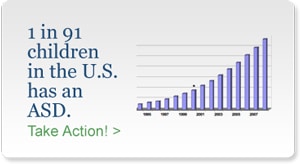
April 10, 2017
Autism April—A Bit More
By Michael D. Shaw
Last week’s article generated a fair amount of e-mail—including some pointed questions from my friend Josh Bloom, of the American Council on Science and Health. Most of the questions and comments referred to the remarks and links that featured Michael J. Goldberg, MD.
As such, it seems appropriate to present more of Goldberg’s ideas…
This one comes from April, 2016: As another Autism Awareness Month begins, sadly nothing has changed. Even the March, 2016 publication from the University of Rochester, entitled “The Brain’s Gardeners: Immune Cells ‘Prune’ Connections Between Neurons,” hardly struck a note in the research community. The paper suggests a link between autism spectrum disorder (ASD) and immune dysfunction, whereby the immune system is not correctly pruning the neurons in the brain.
He also laments that an article from 2004, entitled “Neuroglial Activation and Neuroinflammation in the Brain of Patients with Autism,” should have piqued the curiosity of any researcher with an open mind. After all, this work from Johns Hopkins discusses neuro-immune inflammation, and certainly suggests a reasonable etiology for at least some ASD kids.
Indeed, with an explanation for the findings of “too many neurons in the brain of autistic children” the research community still will not admit this is an autoimmune disease, with an autistic phenotype, and not the current psychiatric label of “Autism.”
When it comes to medical/disease origin, the idea of phenotypes is a major clinical reality. A phenotype is a collection of symptoms that reflects how a disease presents, but doesn’t tell you the cause of the disease. For example, a specific group of signs and symptoms presents as “meningitis,” but that doesn’t tell a physician whether it is bacterial, viral, fungal, protozoan, TB, or other.
The 1:68 children are presenting with a phenotype of Autistic / ASD symptoms. But conventional medicine is making the mistaken assumption that the 1:68 phenotypes are all developmental, psychological, genetic, etc. As Goldberg has emphasized, one cannot have an epidemic of a genetic or developmental disorder. He observes: “Science doesn’t change; it can be ignored, or twisted to fit a popular mindset, but it doesn’t change.”
In his blog postings from last year, he reacted to comments from parents of ASD kids (with proper HIPAA-compliant redaction), who described their generally affectionate children, with few motor issues…
Dr. Leo Kanner, who first described infantile autism, stated that the children were never normal, never affectionate, and never had major motor issues. You are all subjected to a new set of subjective criteria to label your children as “Autistic” even though what is being described has nothing to do with the ideas of Dr. Kanner and other psychiatric experts of the 40s, 50s, and 60s.
Goldberg continues: As I was taught in medical school and confirmed at a medical symposium nearly twenty years ago, short of a known, definable degenerative disease, no child can develop normally until 12, 15, 18 months old, have language, lose it, then on good testing show up like a 10-month-old!
A child that has already developed normally past age 15 or 18 months old, cannot exhibit the dysfunctions above, with no objective findings on MRI, EEG, etc., unless a neuro-immune or neuro-infectious disease process is occurring. To keep thinking that the dysfunctions of these children are mental or developmental is beyond comprehension.
The gauntlet thrown down, how will mainstream medicine respond?
